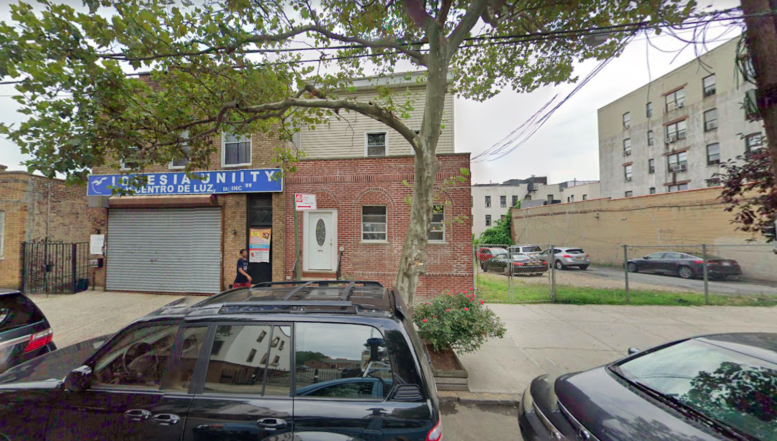New York Attorney General Letitia James, leading a coalition of 19 attorneys general, called on the U.S. Environmental Protection Agency (EPA) to strengthen protections against lead poisoning, particularly for children living in low-income communities and communities of color. While EPA has taken steps to increase public health protections and address lead contamination in vulnerable communities, the coalition argues that EPA could bolster its plans by taking various steps to target childhood lead poisoning, such as expanding resources to better enforce laws, creating new policies to address hazardous waste sites and drinking water, and more.
“Lead poisoning in our kids is a dangerous problem that disproportionately impacts low-income, and Black and brown children and jeopardizes their health and future,” said Attorney General James. “EPA’s current lead plan is an important and necessary start, but more comprehensive resources, strategy, policies, and collaboration are needed to tackle the issue head-on. Our coalition is urging the federal government to be a forceful, reliable, and effective partner in ending childhood lead poisoning in our most vulnerable communities.”
Lead is a highly toxic metal that can cause serious and irreversible adverse health effects. The Centers for Disease Control and Prevention estimates that children in at least 4 million households nationwide are exposed to high levels of lead. A 2021 study published in the Journal of the American Medical Association Pediatrics suggested that more than half of all U.S. children have detectable levels of lead in their blood. That study also found that elevated blood lead levels in children were closely related to poverty, race, and living in older housing.
New York has some of the oldest housing stock in the nation resulting in an ongoing public health crisis of lead poisoning of children from lead paint in aging rental housing. New York communities, in places like Buffalo, suffer from some of the highest rates of childhood lead exposure in the nation from poor housing conditions in old homes with lead paint. Children who have been exposed to even very low levels of lead are at risk for neurological and physical problems during critical stages of early development. In fact, no safe lead level in children has been identified. Children under the age of six are more likely to be exposed to lead than any other age group, as their normal behaviors could result in them chewing lead paint chips; breathing in or swallowing dust from old lead paint that gets on floors, window sills, and hands; and lead can be found in soil, foods eaten by children, and other consumer products.
In their comments, the coalition credits EPA’s Draft Lead Strategy for identifying government-led approaches to increasing public health protections, addressing legacy lead contamination for communities with the greatest exposures, and promoting environmental justice. However, the coalition’s comments identify numerous other measures necessary to strengthen the plan by aggressively targeting hazards posed by lead in paint, drinking water, soils, aviation fuel, air, food, and through occupational and take-home exposures. These include:
- Increasing resources for the enforcement of existing laws relating to lead paint in rental housing and amending existing regulations to require landlords to increase the frequency of inspections of houses with a history of lead paint hazards;
- Developing proactive policies and standards for hazardous waste sites, drinking water, and other sources of lead exposure that are more protective of health and designed to reduce lead poisoning;
- Developing aggressive deadlines for tightening standards, developing enforcement policies, and conducting an endangerment determination for lead in aviation gas under the Clean Air Act;
- Identifying meaningful environmental justice targets to ensure that the communities most in need and the vulnerable are protected;
- Encouraging inter-agency collaboration and data-sharing with other federal agencies such as HUD, OSHA, FAA, FDA, and USDA;
- Pledging allocations of federal funds to replace drinking water service lines containing lead reach struggling and historically marginalized communities;
- Adopting federal regulations requiring testing of water and remediation of lead service lines and lead plumbing fixtures in public, charter, and private schools, and in childcare centers;
- Expanding multi-language informational campaigns and blood lead testing programs to address “take-home lead” exposure — lead from work that accumulates on a worker’s clothing and shoes; and
- Developing other specific metrics for achieving and evaluating success in lead reduction.
Attorney General James is a leader in the fight to end childhood lead poisoning. Through her various legal action across the state of New York, she is holding accountable landlords that allow lead paint-related hazards to proliferate in low-income rental properties. In October 2021, Attorney General James sued landlord John Kiggins and his company, Endzone Properties, Inc., for repeatedly violating lead paint laws and failing to address lead paint hazards, which resulted in the lead poisoning of 18 children living in Endzone properties in Syracuse. In September 2021, Attorney General James announced an agreement in her lawsuit against Chestnut Holdings of New York, Inc., a property management corporation, over its failures to protect children from lead paint hazards in New York City. Also in September 2021, Attorney General James reached a pre-suit agreement with A&E Real Estate Holdings, LLC to ensure that children living in its New York City apartments are protected from dangerous lead-based paint. Additionally, in September 2020, Attorney General James sued a group of Buffalo individuals and companies for repeated violations of city, county, state, and federal laws by illegally allowing lead paint-related hazards to proliferate in their rental properties .
Joining Attorney General James in submitting the comments are the attorneys general of California, Connecticut, Delaware, Hawaii, Iowa, Maine, Maryland, Massachusetts, Michigan, Minnesota, New Mexico, North Carolina, Oregon, Pennsylvania, Rhode Island, Vermont, Wisconsin, and the District of Columbia.






